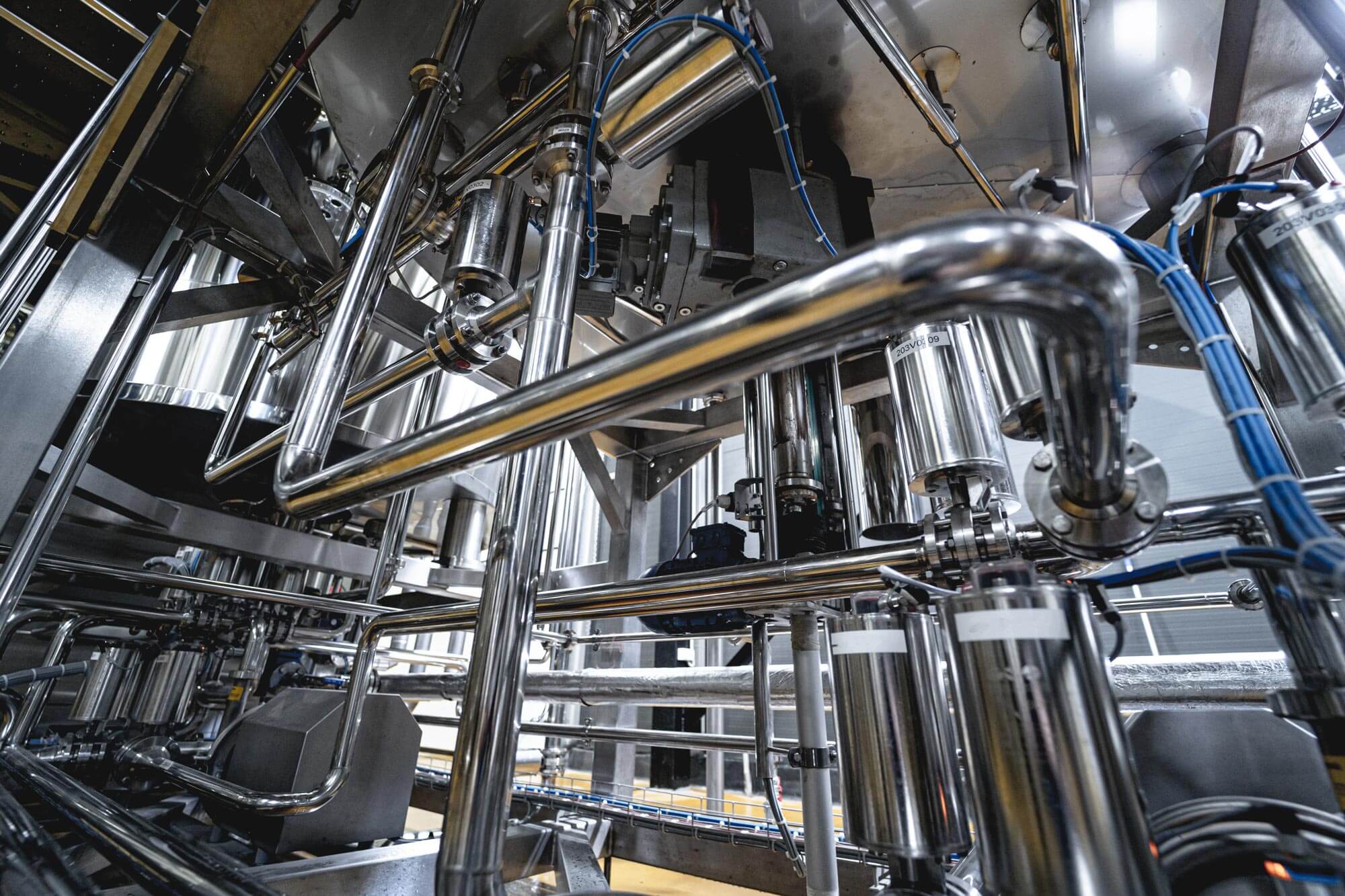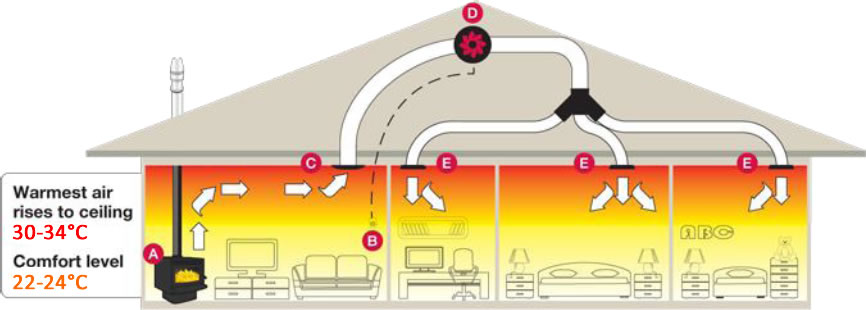Live Data Feedback: How DVS Heat Transfer Systems Enable Predictive Maintenance
The Role of Heat Transfer Equipments in Sustainable Power Solutions for the Future
Heat transfer systems are necessary in the pursuit for lasting energy options. They enhance thermal power monitoring, enhancing the efficiency of renewable innovations. By employing mechanisms like convection, conduction, and radiation, these systems decrease power losses. Their function in solar thermal and geothermal applications is particularly significant. As developments emerge, the possibility for additional advancements raises crucial questions concerning future energy techniques. What developments will shape the landscape of sustainable energy?
Comprehending Heat Transfer Equipments

The Importance of Thermal Energy Administration
Efficient thermal energy management is essential for making the most of power effectiveness and lessening waste in numerous systems. By regulating temperature level and enhancing Heat transfer procedures, companies can substantially lower energy intake and functional prices. Effective monitoring involves the implementation of advanced modern technologies and methods that check and regulate thermal problems within systems, making sure that power resources are used effectively. On top of that, correct thermal power monitoring adds to minimizing greenhouse gas discharges, lining up with international sustainability objectives. It additionally enhances system integrity and efficiency, bring about improved item high quality and longer devices life-span. Ultimately, prioritizing thermal energy administration is an important step in the direction of producing extra sustainable power options and promoting an accountable approach to energy intake in commercial and household contexts.
Applications of Heat Transfer in Renewable Resource
While different renewable energy sources assure sustainability, the efficient application of Heat transfer plays a crucial duty in their performance. In wind power systems, Heat transfer is used for turbine part cooling, boosting efficiency and durability. Geothermal energy relies on effective Heat exchange in between the planet's subsurface and the fluid distributing in the system, maximizing energy removal. Biomass energy procedures also gain from Heat transfer, as it aids in transforming organic products into functional fuel through pyrolysis and gasification. Additionally, in hydropower, maintaining perfect temperatures in reservoirs can improve energy result. Each of these applications shows the vital significance of Heat transfer systems in boosting eco-friendly power innovations, inevitably adding to an extra sustainable power future.
Enhancing Solar Thermal Power Performance
As solar thermal power systems proceed to develop, improving their effectiveness has become necessary for optimizing power result. Breakthroughs in Heat transfer innovations, such as improved thermal storage materials and innovative Heat exchangers, play a significant duty in improving performance. By using advanced materials that have remarkable thermal conductivity, systems can move and capture Heat better. Additionally, incorporating tracking systems that adhere to the sun's course warranties that enthusiasts get suitable solar exposure throughout the day. Utilizing nanotechnology in solar absorbers can better boost energy absorption prices. In addition, incorporating automatic control systems helps handle and manage temperatures energy distribution effectively, leading to minimized losses and improved total system efficiency. These enhancements lead the way for more lasting solar thermal power options in the future.
Geothermal Heating: A Lasting Remedy
Geothermal heating offers a feasible option for lasting power, supplying significant environmental benefits through decreased greenhouse gas emissions. Its performance and cost-effectiveness make it an attractive choice to standard furnace. Challenges connected to application should be resolved to maximize its prospective impact.
Environmental Advantages of Geothermal
Although conventional heating techniques add substantially to greenhouse gas emissions, geothermal heating provides a compelling choice that reduces ecological influence. By using the Earth's inner Heat, geothermal systems make use of a renewable resource source, noticeably lowering dependence on nonrenewable fuel sources. This method generates very little carbon exhausts, making it a cleaner option for business and property home heating. In addition, geothermal systems promote energy efficiency, as they call for less energy compared to standard heater. DVS Heat Transfer Systems. The use of geothermal power additionally helps in lowering air pollution, enhancing local air high quality and public health. As a sustainable solution, geothermal home heating supports environment adjustment mitigation initiatives, positioning itself as a vital component in the shift in the direction of a greener future
Efficiency and Cost-Effectiveness
Exactly how does geothermal home heating measure up in terms of performance and cost-effectiveness compared to standard heating unit? Geothermal heating demonstrates exceptional effectiveness, commonly attaining a coefficient of efficiency (POLICE OFFICER) of 3 to 5, suggesting it creates 3 to five units of Heat for each system of electrical energy taken in. This efficiency translates into lower operating expense, particularly in regions with steady geothermal sources. First installation expenses can be more than traditional systems; nonetheless, lasting savings on power bills and minimized maintenance costs can counter these in advance financial investments. Additionally, many federal governments incentivize geothermal systems through rebates and tax credit reports, improving their cost-effectiveness. Generally, geothermal home heating arises as a economically sensible and lasting option to more conventional home heating solutions.
Implementation Challenges and Solutions
Countless obstacles can impede the extensive application of geothermal home heating systems, regardless of their clear benefits as a sustainable energy remedy. High first setup prices usually prevent homeowners and capitalists, making financing a considerable barrier. Additionally, the geographical limitations of ideal geothermal websites restrict availability in specific areas. Regional guidelines and allowing procedures can likewise complicate project growth, leading to hold-ups. Public recognition and understanding of geothermal systems continue to be reduced, preventing acceptance. To attend to these difficulties, targeted education and learning campaigns can boost public expertise, while federal government rewards can minimize financial concerns. Teaming up with regional authorities to enhance guidelines may help with smoother task approvals, eventually promoting the fostering of geothermal home heating as a sensible, sustainable power choice.
Technologies in Heat Transfer Technologies
Innovations in Heat transfer innovations play a crucial role in boosting energy performance and sustainability. Advanced Heat exchangers and stage adjustment products go to the leading edge of these growths, using significant renovations in thermal management. These technologies not only maximize power use however also add to decreasing environmental impact in numerous applications.
Advanced Heat Exchangers
Advanced Heat exchangers play an essential role in enhancing energy efficiency throughout numerous applications in lasting energy site here remedies. These tools assist in the transfer of Heat in between two or more fluids, considerably minimizing energy intake in procedures such as industrial heating, air conditioning, and power generation. Technologies in products and design, such as using nanofluids and small setups, have actually resulted in improved thermal performance and lowered dimension requirements. Furthermore, advancements in digital surveillance and control systems enable for optimized procedure, more raising performance. By minimizing waste Heat and making the most of energy healing, advanced Heat exchangers add to lower carbon footprints and sustain the change toward ecologically pleasant modern technologies. Their continued advancement is crucial for accomplishing international energy sustainability objectives.
Stage Adjustment Products
The combination of phase modification products (PCMs) into Heat transfer modern technologies represents a substantial innovation in power monitoring and performance. PCMs absorb and release thermal power during their phase changes, allowing reliable temperature regulation in structure materials and energy systems. By saving excess Heat during peak periods and launching it when need rises, PCMs add to fill shifting and power preservation - DVS Heat Transfer Systems. This capacity boosts the efficiency of renewable resource systems, specifically in solar thermal applications. Furthermore, PCMs can boost the thermal convenience of interior atmospheres, reducing reliance on conventional heating and cooling down approaches. As developments in PCM formulas proceed to arise, their function in sustainable energy solutions is positioned to grow, offering promising avenues for future study and application

Future Prospects for Heat Transfer in Lasting Energy
As the need for sustainable power services remains to climb, the function of Heat transfer systems is coming to be progressively critical fit future innovations. Developments in designs and materials are anticipated to enhance effectiveness in Heat transfer, reducing energy losses in various applications. The combination of innovative thermal storage systems, such as stage change materials and thermochemical storage space, will certainly enable far better administration of power sources. Research into nanofluids and biomimetic Heat exchangers might additionally optimize thermal efficiency. Furthermore, the fostering of wise innovations will permit real-time tracking and adaptive control of Heat transfer procedures. These advancements are poised to greatly add to the overall performance and sustainability of power systems, leading the way for a much more energy-efficient future.
Regularly Asked Concerns
How Can People Implement Heat Transfer Equipment in the house?

Individuals can carry out Heat transfer systems in the house by installing energy-efficient appliances, making use of radiant home heating, and optimizing insulation. These measures boost energy effectiveness, lower prices, and promote sustainable methods in residential atmospheres.

What Are the Costs Associated With Setting Up Heat Transfer Equipments?
The prices related to setting up browse around this web-site Heat transfer systems vary widely, generally including equipment, installation labor, and upkeep. Variables such as system kind, home dimension, and neighborhood regulations greatly influence the general expenditure entailed.
Are There Government Motivations for Heat Transfer System Installations?
Government incentives for Heat transfer system installations vary by area and can consist of tax obligation credit scores, gives, and rebates. These economic benefits intend to encourage adoption, eventually advertising power efficiency and reducing ecological effect within areas.
Just How Do Heat Transfer Solutions Effect Energy Bills?
Heat transfer systems notably influence energy costs by optimizing energy efficiency. By improving the transfer of Heat, these systems lower energy intake, causing reduced utility costs and creating a more sustainable method web link to energy management.
What Maintenance Is Needed for Heat Transfer Equipments?
Maintenance for Heat transfer systems includes routine examinations, cleansing of parts, inspecting liquid degrees, making certain correct insulation, and changing used parts. These tasks assist keep efficiency, protect against break downs, and extend the system's operational life-span.
These systems facilitate the movement of thermal energy from one medium to an additional, making it possible for the transfer of Heat for home heating, cooling, or energy generation purposes. Geothermal energy relies on efficient Heat exchange between the earth's subsurface and the liquid flowing in the system, maximizing energy extraction. In addition, geothermal systems promote power efficiency, as they call for much less energy contrasted to conventional heating systems. Advanced Heat exchangers play an important role in enhancing power effectiveness throughout different applications in lasting energy options. Heat transfer systems especially affect energy costs by enhancing energy effectiveness.